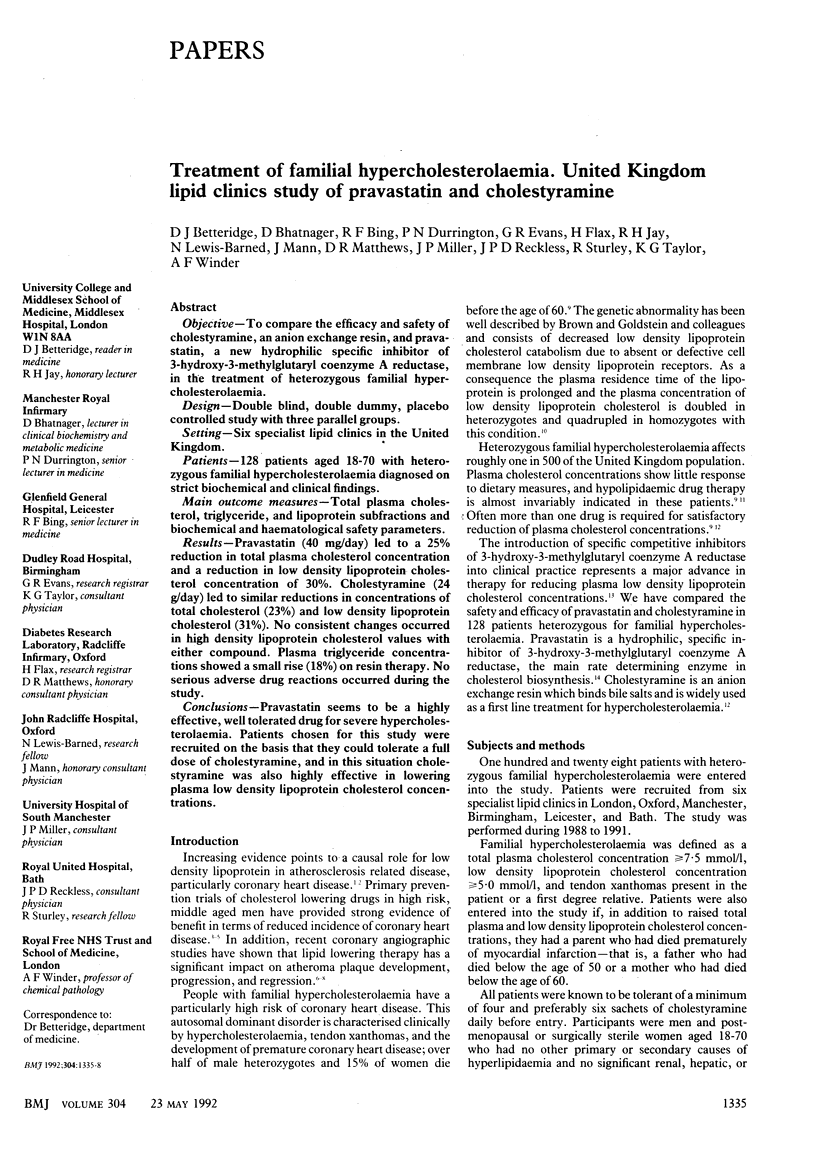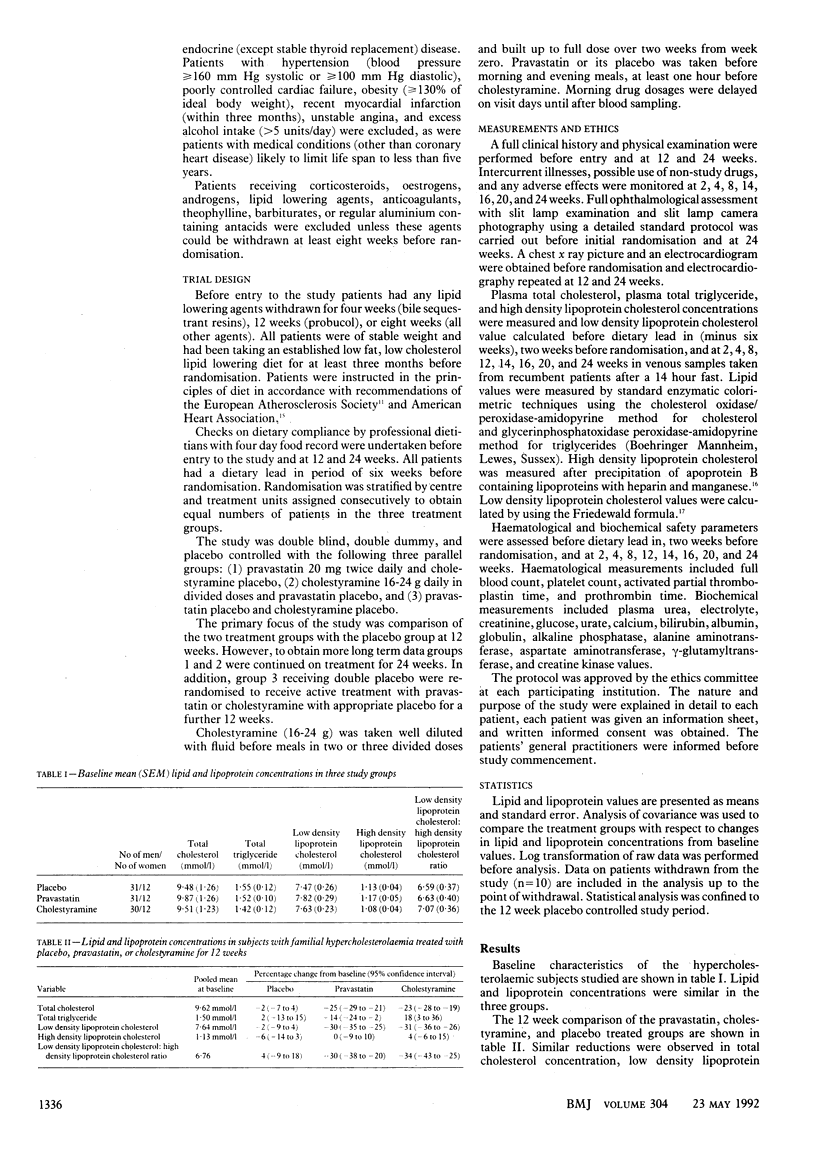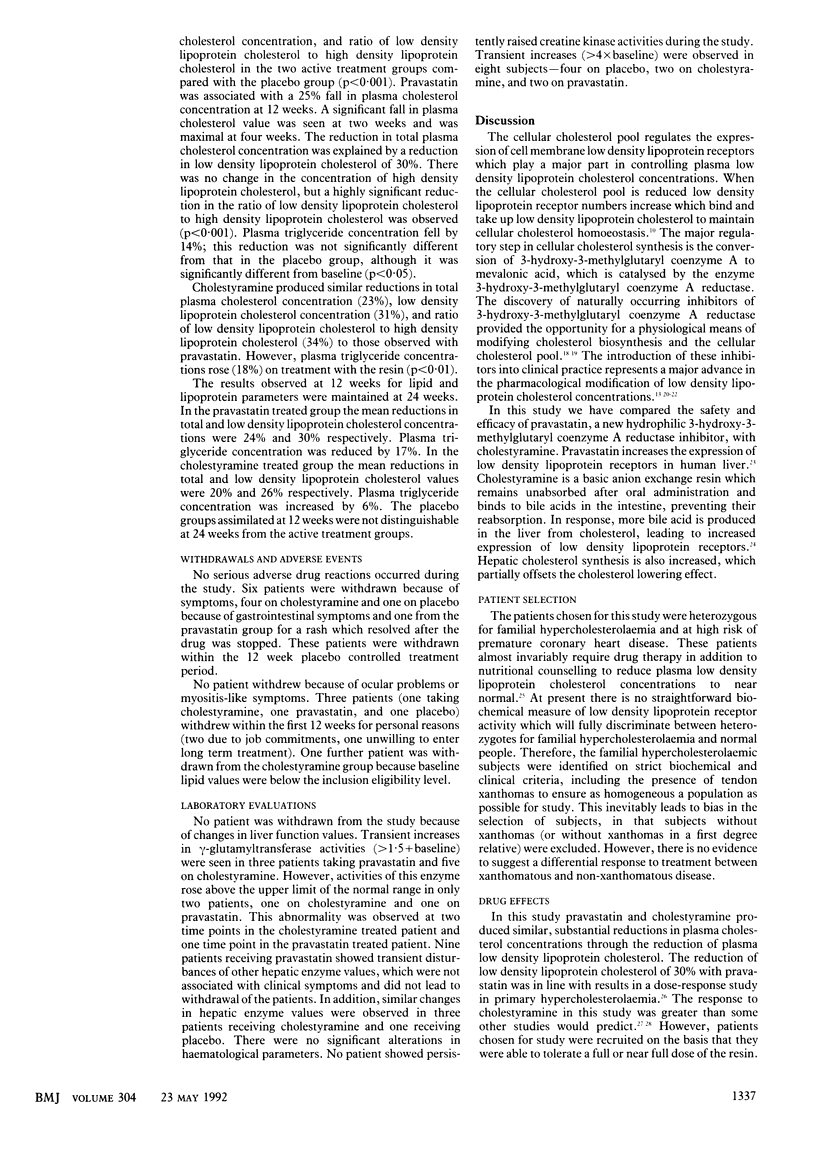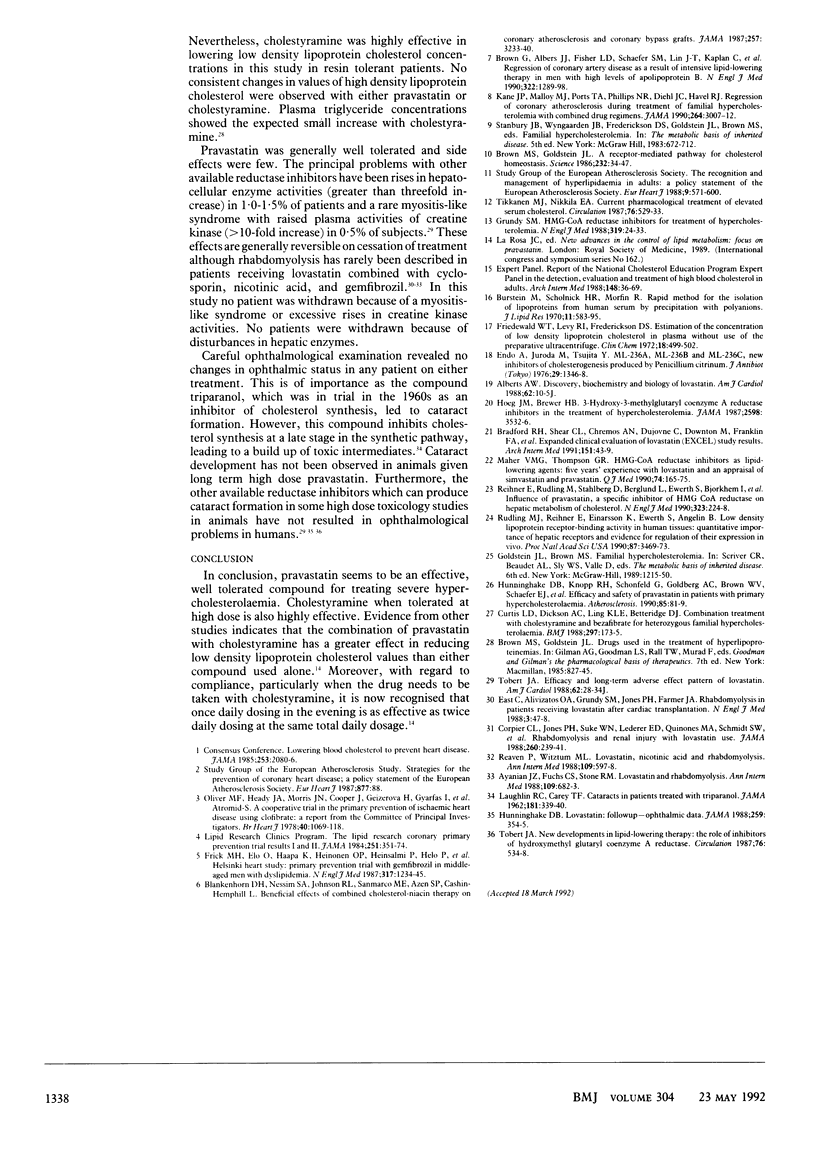Abstract
OBJECTIVE--To compare the efficacy and safety of cholestyramine, an anion exchange resin, and pravastatin, a new hydrophilic specific inhibitor of 3-hydroxy-3-methylglutaryl coenzyme A reductase, in the treatment of heterozygous familial hypercholesterolaemia. DESIGN--Double blind, double dummy, placebo controlled study with three parallel groups. SETTING--Six specialist lipid clinics in the United Kingdom. PATIENTS--128 patients aged 18-70 with heterozygous familial hypercholesterolaemia diagnosed on strict biochemical and clinical findings. MAIN OUTCOME MEASURES--Total plasma cholesterol, triglyceride, and lipoprotein subfractions and biochemical and haematological safety parameters. RESULTS--Pravastatin (40 mg/day) led to a 25% reduction in total plasma cholesterol concentration and a reduction in low density lipoprotein cholesterol concentration of 30%. Cholestyramine (24 g/day) led to similar reductions in concentrations of total cholesterol (23%) and low density lipoprotein cholesterol (31%). No consistent changes occurred in high density lipoprotein cholesterol values with either compound. Plasma triglyceride concentrations showed a small rise (18%) on resin therapy. No serious adverse drug reactions occurred during the study. CONCLUSIONS--Pravastatin seems to be a highly effective, well tolerated drug for severe hypercholesterolaemia. Patients chosen for this study were recruited on the basis that they could tolerate a full dose of cholestyramine, and in this situation cholestyramine was also highly effective in lowering plasma low density lipoprotein cholesterol concentrations.
Full text
PDF



Selected References
These references are in PubMed. This may not be the complete list of references from this article.
- A co-operative trial in the primary prevention of ischaemic heart disease using clofibrate. Report from the Committee of Principal Investigators. Br Heart J. 1978 Oct;40(10):1069–1118. doi: 10.1136/hrt.40.10.1069. [DOI] [PMC free article] [PubMed] [Google Scholar]
- Brown G., Albers J. J., Fisher L. D., Schaefer S. M., Lin J. T., Kaplan C., Zhao X. Q., Bisson B. D., Fitzpatrick V. F., Dodge H. T. Regression of coronary artery disease as a result of intensive lipid-lowering therapy in men with high levels of apolipoprotein B. N Engl J Med. 1990 Nov 8;323(19):1289–1298. doi: 10.1056/NEJM199011083231901. [DOI] [PubMed] [Google Scholar]
- Burstein M., Scholnick H. R., Morfin R. Rapid method for the isolation of lipoproteins from human serum by precipitation with polyanions. J Lipid Res. 1970 Nov;11(6):583–595. [PubMed] [Google Scholar]
- Endo A., Kuroda M., Tsujita Y. ML-236A, ML-236B, and ML-236C, new inhibitors of cholesterogenesis produced by Penicillium citrinium. J Antibiot (Tokyo) 1976 Dec;29(12):1346–1348. doi: 10.7164/antibiotics.29.1346. [DOI] [PubMed] [Google Scholar]
- Friedewald W. T., Levy R. I., Fredrickson D. S. Estimation of the concentration of low-density lipoprotein cholesterol in plasma, without use of the preparative ultracentrifuge. Clin Chem. 1972 Jun;18(6):499–502. [PubMed] [Google Scholar]
- Grundy S. M. HMG-CoA reductase inhibitors for treatment of hypercholesterolemia. N Engl J Med. 1988 Jul 7;319(1):24–33. doi: 10.1056/NEJM198807073190105. [DOI] [PubMed] [Google Scholar]
- Hoeg J. M., Brewer H. B., Jr 3-Hydroxy-3-methylglutaryl--coenzyme A reductase inhibitors in the treatment of hypercholesterolemia. JAMA. 1987 Dec 25;258(24):3532–3536. [PubMed] [Google Scholar]
- Kane J. P., Malloy M. J., Ports T. A., Phillips N. R., Diehl J. C., Havel R. J. Regression of coronary atherosclerosis during treatment of familial hypercholesterolemia with combined drug regimens. JAMA. 1990 Dec 19;264(23):3007–3012. [PubMed] [Google Scholar]
- Tikkanen M. J., Nikkilä E. A. Current pharmacologic treatment of elevated serum cholesterol. Circulation. 1987 Sep;76(3):529–533. doi: 10.1161/01.cir.76.3.529. [DOI] [PubMed] [Google Scholar]


